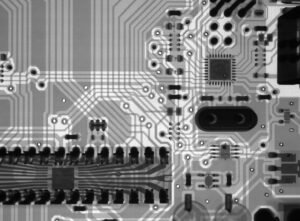Top AI Risks
Introduction
Artificial Intelligence (AI) is rapidly advancing and has the potential to revolutionize various industries. However, with great power comes great responsibility. To ensure the successful integration of AI, it is crucial to assess and address the risks associated with this technology. In this article, we will explore some of the top AI risks that need to be carefully considered.
Key Takeaways
- AI risks can have significant impacts on society and businesses alike.
- Ethical concerns, bias, job displacement, and security vulnerabilities are some of the key risks to address in AI.
- Transparency, accountability, and regulation are essential in mitigating AI risks.
Ethical Concerns
One of the primary risks associated with AI is the ethical implications it brings. **AI systems have the potential to make decisions that can affect human lives**, such as in healthcare or autonomous vehicles. Ensuring that AI algorithms are programmed with ethical considerations is crucial to prevent unintended harm.
Bias in AI
Another risk stems from the potential bias present in AI systems. **If trained on biased data, AI algorithms can perpetuate and amplify societal prejudices**. For example, facial recognition systems have been found to exhibit racial and gender bias. Overcoming this risk requires diverse training data and constant monitoring.
Job Displacement
The advancement of AI technology brings concerns about job displacement. **Automation and AI may replace certain job roles**, leading to unemployment for some workers. However, it is also important to note that AI can create new job opportunities, requiring the workforce to adapt and upskill accordingly.
Security Vulnerabilities
AI can introduce new security vulnerabilities as hackers may exploit AI systems for malicious purposes. **Adversarial attacks can manipulate AI algorithms, leading to potentially dangerous outcomes**. Ensuring robust cybersecurity measures and rigorous testing are essential in minimizing these risks.
Regulation and Accountability
To mitigate the risks associated with AI, **clear regulations and guidelines should be established**. This would ensure transparency, accountability, and fairness in the development and deployment of AI systems. Collaboration between policymakers, AI developers, and experts is crucial in finding the right balance between innovation and protection.
Data Privacy
With AI’s dependency on data, **protecting individuals’ privacy becomes paramount**. AI systems analyze vast amounts of personal data, raising concerns about data misuse or unauthorized access. Strict data privacy regulations and robust security measures are essential to safeguard individuals’ sensitive information.
Conclusion
The rapid growth of AI brings immense opportunities, but it is vital to acknowledge and address the risks associated with this technology. From ethical concerns and bias to job displacement and security vulnerabilities, it is essential to approach AI with caution and take proactive measures to minimize potential negative impacts. Through collaboration, regulation, and responsible development, we can unlock the potential of AI while ensuring a safer, more equitable future.
| AI Risk | Impact |
|---|---|
| Ethical Concerns | Potential harm to human lives |
| Bias in AI | Perpetuation of societal prejudices |
| AI Risk | Impact |
|---|---|
| Job Displacement | Unemployment and need for upskilling |
| Security Vulnerabilities | Potential for malicious exploitation |
| AI Risk | Impact |
|---|---|
| Regulation and Accountability | Transparent, accountable, and fair AI development and deployment |
| Data Privacy | Protection of individuals’ privacy and sensitive information |

Common Misconceptions
Misconception 1: AI will take over the world
- AI is created to assist and improve human efficiency, not replace us entirely.
- AI systems lack human creativity, moral values, and consciousness needed for world domination.
- AI is programmed by humans, and its actions are still governed by human supervision and oversight.
Misconception 2: AI will eliminate all jobs
- While AI may automate certain tasks, it also creates new job opportunities in fields like AI development and maintenance.
- Many jobs require human empathy and decision-making skills that AI is unable to replicate.
- AI can assist in job augmentation, allowing humans to focus on higher-level tasks by automating repetitive or mundane work.
Misconception 3: AI is infallible and unbiased
- AI systems can be subject to errors, bugs, and biases as they are developed by humans who may unconsciously introduce their own biases.
- Data input to AI algorithms can contain biases that may lead to unequal or unfair outcomes.
- Ensuring AI is unbiased requires continuous monitoring, auditing, and rigorous testing throughout the development and deployment process.
Misconception 4: AI is a recent phenomenon
- The concept of AI has been around since the mid-20th century, with early research and development dating back to the 1950s.
- AI technologies have evolved over decades, with significant advancements in recent years fueled by improvements in computational power and big data.
- While AI may seem new to some, its roots trace back further than many realize.
Misconception 5: AI will have full human-like consciousness
- Current AI systems are based on narrow or specialized intelligence, designed to perform specific tasks and lack the general intelligence and consciousness of humans.
- Artificial general intelligence (AGI) capable of human-level consciousness is still hypothetical and far from being realized.
- Even if AGI were to be developed, the philosophical and ethical implications of creating sentient machines raise complex questions that remain unresolved.

The Widespread Use of Facial Recognition Technology
In recent years, the use of facial recognition technology has become increasingly widespread across various industries. This table highlights some key statistics and facts related to the adoption and risks of this technology.
| Statistic | Facial Recognition Technology |
|---|---|
| Number of countries using facial recognition technology for surveillance | 75 |
| Accuracy rate of commercial facial recognition systems | Between 80% and 99% |
| Number of surveillance cameras equipped with facial recognition worldwide | 770 million |
| Main risks associated with facial recognition technology | Privacy invasion, bias, and potential abuse of power |
Rise of AI in Autonomous Vehicles
Autonomous vehicles are revolutionizing the transportation industry, with artificial intelligence playing a crucial role. Explore the following table to learn more about the adoption and risks of AI-driven autonomous vehicles.
| Fact | Autonomous Vehicles |
|---|---|
| Number of self-driving car fatalities in the U.S. since 2016 | 30 |
| Percentage of Americans who fear riding in autonomous vehicles | 64% |
| Estimated annual economic impact of autonomous vehicles by 2035 | $800 billion |
| Concerns regarding AI in autonomous vehicles | Safety, ethical dilemmas, and job displacement |
AI’s Impact on the Job Market
The integration of artificial intelligence in the workforce has both positive and negative implications. Explore the following table for some compelling data on AI‘s impact on the job market.
| Data | Job Market and AI |
|---|---|
| Projected global job displacement due to AI by 2030 | 75 million |
| Number of new jobs created by AI by 2025 | 12 million |
| Sectors most vulnerable to AI-related job loss | Manufacturing, customer service, and transportation |
| Skills that will be in high demand due to AI | Data analysis, programming, and creative thinking |
The Ethics of AI in Healthcare
Artificial intelligence has immense potential to improve healthcare outcomes, but ethical considerations are paramount. The table below presents some key aspects related to the ethical implications of AI in healthcare.
| Information | AI in Healthcare |
|---|---|
| Percentage of healthcare executives utilizing AI in decision-making | 47% |
| Concerns regarding AI’s impact on patient privacy | Data breaches and unauthorized access |
| Benefits of AI in healthcare | Improved diagnostics, personalized treatment, and enhanced patient care |
| Potential risks of relying heavily on AI | Misdiagnosis, AI bias, and reduced human interaction |
AI and Cybersecurity
The rapid advancement of artificial intelligence has both positive and negative implications for cybersecurity. The table below provides some fascinating data on the intersection of AI and cybersecurity.
| Data | AI and Cybersecurity |
|---|---|
| Number of cybersecurity attacks detected in 2020 | Over 4 billion |
| Percentage of organizations using AI for cybersecurity defense | 69% |
| Advantages of AI in cybersecurity | Enhanced threat detection, rapid response, and behavioral pattern analysis |
| Risks associated with AI in cybersecurity | Adversarial attacks, vulnerability to AI manipulation, and lack of transparency |
The Future of AI and Job Skills
As artificial intelligence continues to evolve, certain skills will become increasingly valuable in the job market. The table below highlights the future job skills that will play a crucial role in an AI-driven world.
| Job Skills | Future with AI |
|---|---|
| Critical thinking and problem-solving | Identifying AI biases and managing complex systems |
| Adaptability and flexibility | Working alongside AI systems and embracing technological advancements |
| Emotional intelligence | Understanding and collaborating with AI systems while maintaining human-centric interactions |
| Creativity and innovation | Developing AI solutions and pushing the boundaries of technological capabilities |
AI Bias in Hiring Practices
The integration of AI in the hiring process has raised concerns regarding bias and fairness. Explore the following table to understand the impact of AI on hiring practices and potential risks.
| Data | AI in Hiring |
|---|---|
| Percentage of Fortune 500 companies using AI in recruitment | 68% |
| Racial bias in AI resume screening tools | Black candidates are often 47% less likely to receive callbacks |
| Risks associated with AI in hiring | Unconscious bias reinforcement, lack of diversity, and reduced human judgment |
| Addressing AI bias in hiring | Regularly auditing AI algorithms, diverse training data, and human oversight |
AI and Fake News
The proliferation of AI has influenced the creation and spread of fake news, leading to significant societal challenges. The table below showcases some intriguing information about the role of AI in the propagation of misinformation.
| Information | AI and Fake News |
|---|---|
| Percentage of internet users exposed to fake news | Over 70% |
| Use of AI-generated deepfake videos | Increasing trend, posing risks to individuals and public figures |
| Steps to combat AI-driven fake news | Developing AI detection tools, promoting media literacy, and fact-checking initiatives |
| Governmental responses | Regulating AI use, enforcing transparency, and promoting responsible AI practices |
AI in Customer Service
Advancements in AI have transformed customer service interactions, streamlining processes and enhancing user experiences. The table below provides insightful data on AI’s role in customer service.
| Data | AI in Customer Service |
|---|---|
| Percentage of businesses using AI chatbots for customer service | 64% |
| Customer satisfaction rates with AI-powered chatbots | Average of 70-80% |
| Limitations of AI in customer service | Lack of empathy, inability to handle complex scenarios, and language understanding challenges |
| Successful applications of AI in customer service | Quick issue resolution, 24/7 availability, and personalized recommendations |
Artificial intelligence presents immense opportunities and risks in various sectors. While AI has the potential to enhance efficiency, decision-making, and numerous aspects of our lives, it is crucial to navigate the associated risks effectively. Striking a balance between innovation, ethics, and accountability will play a vital role in shaping a future where AI benefits humanity in a responsible and equitable manner.
Top AI Risks – Frequently Asked Questions
Question 1: What are the potential risks associated with the increased use of AI?
Answer
Question 2: How does AI contribute to job displacement?
Answer
Question 3: What are the concerns regarding data privacy in the context of AI?
Answer
Question 4: What is algorithmic bias and why is it a concern?
Answer
Question 5: How can we ensure human control over autonomous AI systems?
Answer
Question 6: What are the potential risks of relying too heavily on AI decision-making?
Answer
Question 7: How can AI be misused for malicious purposes?
Answer
Question 8: What efforts are being made to address AI risks?
Answer
Question 9: Can AI ever achieve true consciousness, and what are the implications if it does?
Answer
Question 10: How can we strike a balance between harnessing the benefits of AI and mitigating its risks?
Answer




